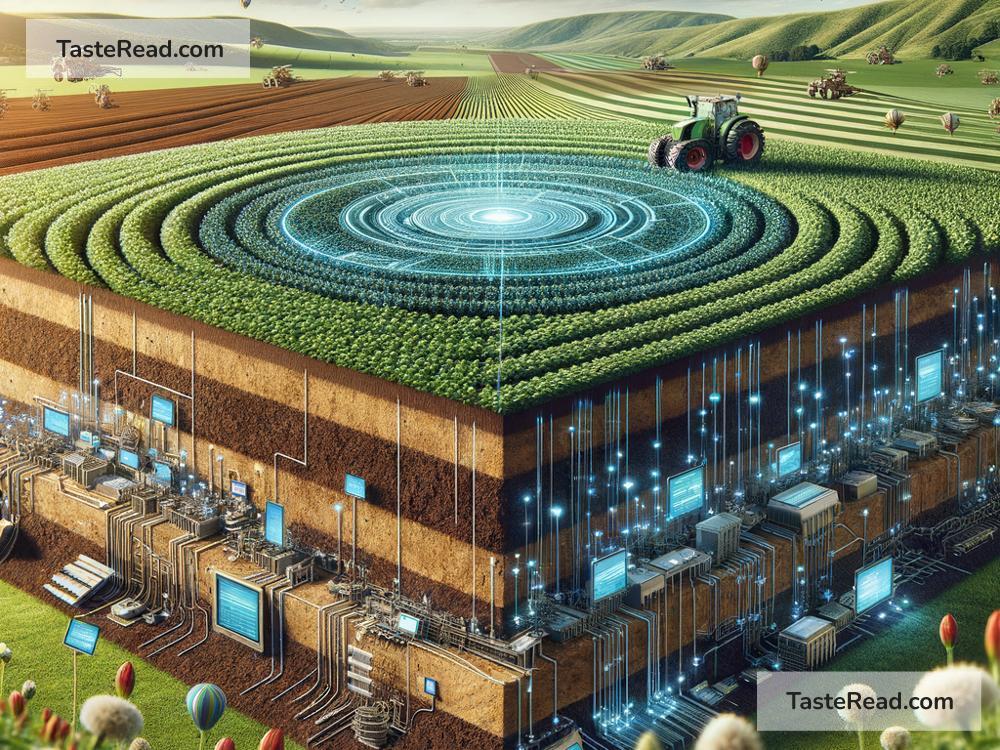The Future of Soil Health Management: A Smart Approach to Healthy Farms
Soil is the foundation of life on Earth. It grows our food, filters our water, and is home to billions of tiny organisms. Healthy soil is also important for fighting climate change, as it helps store carbon and regulate our environment. However, soil health is under threat. Pollution, erosion, over-farming, and climate change are damaging soil across the globe. If we don’t act now, we could face problems like less food, poor water quality, and an unhealthy planet.
Thankfully, scientists, farmers, and communities are coming together to save soil. New technologies, better practices, and smarter policies are paving the way for a brighter future in soil health management. Let’s take a closer look at what the future of soil care might look like.
A Big Problem That Needs Attention
Before we talk about solutions, it’s important to understand why soil health matters. Soil is not just dirt—it’s alive! Each handful of soil contains millions of microbes, fungi, and other organisms that work together to break down organic matter and create nutrients for plants. Healthy soil helps grow better crops, prevents flooding, and absorbs carbon dioxide (CO2) from the air.
But human activities have been harming soil for decades. Over-farming, deforestation, industrial pollution, and the use of chemicals have reduced the nutrients and life in soil. Around 33% of the world’s soil is already degraded, meaning it’s less fertile and less capable of supporting life. If we don’t change how we manage soil, the problem will only get worse.
New Technologies to the Rescue
Technology is playing a big role in improving soil health. In the future, farmers will have access to advanced tools that help them monitor and manage soil better. Here are some exciting innovations to look forward to:
1. Soil Sensors
Imagine being able to check your soil’s health the way you monitor the battery on your phone. Soil sensors can measure moisture, temperature, pH, nutrients, and other factors. Farmers can use these sensors to know exactly what their soil needs—and when. This prevents overwatering, over-fertilizing, and other practices that harm soil health.
2. Drones and Satellite Data
Drones and satellites are making it easier to monitor soil from above. These devices can take images and gather data to map soil conditions across farms. Farmers can identify problem areas quickly and make targeted changes to improve soil health.
3. Artificial Intelligence (AI)
AI systems can analyze soil data and recommend farming practices based on specific crops, weather, and soil conditions. For example, AI might suggest planting cover crops to protect soil during rainy seasons or switching fertilizers to boost nutrients.
4. Bioengineering
Scientists are creating new types of crops that can improve soil health. For example, some genetically modified plants have deeper roots that prevent soil erosion and help store more carbon underground. Bioengineered microbes are also being developed to boost soil fertility naturally.
Better Farming Practices: Back to Nature
While technology is important, some soil health solutions focus on returning to natural ways of farming. These practices are not only sustainable but also affordable for farmers around the world. Here are some promising methods:
1. Regenerative Farming
Regenerative farming is like giving soil a long-term health plan. It involves methods like minimal tillage (avoiding excessive plowing), planting cover crops, rotating crops, and composting organic waste. These techniques promote biodiversity, add nutrients to the soil, and protect it from erosion.
2. Agroforestry
Combining trees and crops on the same land is called agroforestry. Trees can improve soil structure, protect it from wind and rain, and add organic matter as leaves fall and decompose. This practice is great for both soil health and the environment.
3. Organic Farming
Chemical fertilizers and pesticides can kill helpful organisms in the soil. Switching to organic farming methods, like using manure and natural pest control, can restore life to soil over time.
4. Precision Agriculture
Precision agriculture uses technology to farm efficiently. For example, farmers can use GPS systems to apply fertilizers or water only where needed. This avoids wasting resources and reduces harm to the soil.
Policies for a Healthier Future
Governments and organizations play a pivotal role in supporting soil health. Policies that promote sustainable farming can encourage farmers to protect their land. For example, programs that offer subsidies for planting cover crops or using eco-friendly methods can make a big difference. Education campaigns can also help farmers learn about the importance of soil health.
At the global level, agreements like the United Nations’ Sustainable Development Goals (SDGs) highlight the need for protecting land and soil. By working together, countries can tackle challenges like desertification and climate change.
Why Soil Health Matters to You
You don’t have to be a farmer to support soil health! Every person can contribute to healthier soil, whether it’s through composting at home, buying organic food, planting trees, or reducing waste. When soil is healthy, plants grow better, food is more nutritious, and the planet is more resilient.
Final Thoughts
The future of soil health management looks promising, thanks to innovations in technology, better farming methods, and stronger policies. However, it will take time and teamwork to restore damaged soil and stop further destruction. By caring for soil today, we can protect our food, water, and planet for generations to come.
Healthy soil is the heart of life. Let’s make sure it stays strong!


